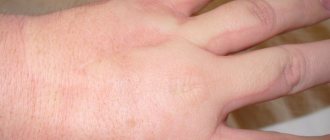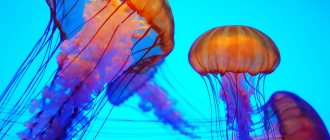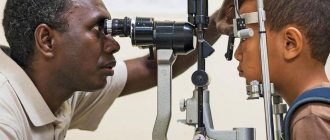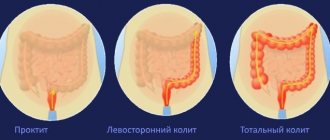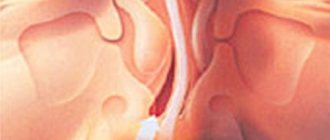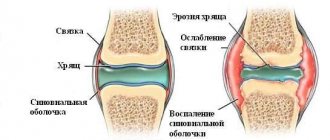Causes
The sun's rays themselves are not allergens. Under their influence, allergen substances accumulate in the body, which lead to sun allergies.
Photodermatosis, or photodermatitis, often occurs in newborns because their immune system has not yet adapted to the environment.
All causes of allergies can be divided into external and internal.
External
This group includes external factors that increase the sensitivity of the immune system to the sun. As a result, allergic manifestations occur.
External causes of photodermatitis:
- perfumery;
- cosmetical tools;
- topical medications;
- systemic antibiotics and diuretics;
- antihistamines;
- cytostatics;
- cardiovascular drugs (Trazicor, Amiodarone);
- NSAIDs;
- hormonal drugs;
- plant pollen during flowering.
Photodermatosis occurs due to a weakening of the immune system by an external factor. This could be vaccination, peeling, tattooing.
Domestic
Signs of skin allergies may appear for the following reasons:
- liver and gastrointestinal diseases;
- violation of metabolic processes;
- weakening of the immune system;
- avitaminosis.
Once these factors are eliminated, solar urticaria may disappear even without treatment.
Allergy to the sun in children often develops with a history of allergic reactions, chronic kidney and liver diseases, and also due to recent infectious diseases.
Consequences and complications
In addition to the symptoms that significantly worsen our lives, allergies have many dangerous consequences. For example, eczema, bronchial asthma, and atopic skin diseases often develop against its background. In addition, allergies are a background for the development of other pathologies that can affect almost all organs and systems.
Against the background of allergies, other somatic and infectious diseases are more severe. In addition, they are more difficult to diagnose, since their manifestations often overlap with those of allergies, and, as a result, it is quite difficult for doctors to prescribe drug therapy without causing an allergic reaction to it.
Kinds
There are endogenous (allergic reaction of internal origin) and exogenous (external origin) forms. The most common are polymorphic rash, solar urticaria, phototoxic and photoallergic dermatitis.
Endogenous
Allergies are caused by internal factors, that is, diseases that affect the functioning of the immune system.
Classification of endogenous photodermatosis:
- porphyria – a disorder of pigment metabolism;
- solar eczema is a type of allergic reaction that is accompanied by a rash in the form of blisters, erosions and spots;
- solar prurigo is a disease caused by metabolic disorders;
- xeroderma pigmentosum – hereditary ultraviolet intolerance;
- Bazin's light pox is a congenital hypersensitivity to sunlight, which manifests itself as erythematous spots and blisters.
These forms of allergies can occur in the form of a phototoxic or photoallergic reaction. The first manifestation is sunburn. Swelling, erythema and blisters filled with liquid appear. In a photoallergic reaction, the body rejects ultraviolet radiation.
Exogenous
Exogenous photodermatosis is caused by external irritants. Redness of the skin and a rash in the form of blisters appear. The allergy is accompanied by severe itching.
Often this reaction develops in response to taking medications or using cosmetics that increase sensitivity to sunlight. Photosensitivity (increased sensitivity to the sun) is provoked by the following components in the composition:
- para-aminobenzoic, boric or salicylic acid;
- retinoids;
- polyunsaturated fatty acids;
- phenols;
- essential oils;
- dill or parsley juice;
- mercury compounds;
- eosin.
Sometimes a rash can be caused by chlorinated water.
Solar urticaria is more common in young children, people with fair skin and weak immune systems. Also at risk are pregnant women, patients with a hereditary predisposition and those who abuse solariums. There is a high likelihood of photodermatosis in people with any type of dermatitis.
The exogenous form also occurs in the following pathologies:
- Gunther's disease is a hereditary disease that leads to sun intolerance;
- pellagra is a disease caused by a deficiency of nicotinic acid in the body;
- food allergy - intolerance to food products, for example, citrus fruits, carrots, parsley, as well as foods high in dyes, preservatives and stabilizers.
Can people be allergic to the sun?
People may experience the first signs of sun allergy in late April early May. They should understand that the sun's rays themselves cannot act as an allergen, since they only affect the surface of the skin. An allergic reaction in people occurs due to the production of certain substances in the cells of the epidermis. This process triggers ultraviolet radiation upon contact with the skin. Modern medicine gives the following definition to this condition of people - a phototoxic reaction or photodermatosis.
Symptoms
Symptoms of sun allergy do not appear immediately. The rash may appear several hours (phototoxic) or several days (photoallergic) after exposure to ultraviolet light.
Main manifestations:
- skin redness;
- itching or burning;
- rashes in the form of blisters or papules.
Symptoms may vary depending on the age of the patient.
In children
Solar urticaria in a child is similar to the manifestations of ordinary allergies. Symptoms:
- skin redness;
- skin rashes;
- itching and burning;
- nasal congestion;
- swelling of the lips;
- lacrimation, nasal discharge;
- sneezing.
More often, signs of photodermatosis appear on the face, chest, arms and legs, that is, on open areas of the body.
Sometimes the child’s body temperature rises, pain and dizziness. The baby becomes drowsy and capricious.
In adults
In adults, the symptoms of photodermatosis are more extensive. The nature of the rash and skin manifestations depend on the form of the allergic reaction. It can be:
- bubbles filled with clear liquid;
- swelling and redness of the skin;
- dark red seals;
- hyperpigmentation, areas of depigmentation;
- the appearance of scars;
- erythematous elements;
- thickening of the stratum corneum (hyperkeratosis);
- thinning of the skin (epidermal atrophy);
- peeling, appearance of keratinized scales;
- hives.
All skin rashes are accompanied by peeling, itching or burning.
Allergic symptoms can affect not only open areas of the body, but also the eyes. Watery eyes and intolerance to light appear. A late manifestation of photodermatitis is sunburn.
Technique for diagnosing sun allergy
There is no need to treat yourself; at the first signs of illness, make an appointment with a doctor - a specialist. A dermatologist will determine the basis for the occurrence of photodermatitis using allergological tests and prescribe how to treat sun allergies.
At your doctor’s appointment you will have the following treatment protocol:
- The dermatologist will interview the patient . The questions will concern the first signs of allergies and symptoms of the disease. The doctor will ask about the patient’s childhood diseases, hereditary family pathologies and harmful factors in the workplace;
- When examining the patient, the dermatologist will pay attention and palpate (feel) the skin for the breadth and depth of the lesions;
- Depending on the nature of photodermatitis, the specialist will prescribe allergy tests if he suspects an allergic form of the disease.
Research into the causes of the disease involves taking a general, immunological and biochemical blood test, diagnosing the kidneys, liver, and gastrointestinal tract. An examination of internal organs using ultrasound will also be prescribed.
Treatment
Photodermatosis occurs in a chronic form. But by following the recommendations of an allergist, it is possible to get rid of allergic manifestations forever.
During the period of treatment of photodermatosis, it is necessary to avoid exposure to sunlight on the skin.
Treatment of solar urticaria is carried out using systemic and local remedies. A pronounced therapeutic effect can only be achieved with the help of complex therapy.
Antihistamines, sorbents and vitamin preparations, for example, Tocopherol acetate (vitamin E), are necessarily prescribed.
Enterosorbents
To treat allergies, sorbents are used - Smecta, Activated carbon, Polysorb, Enterosgel.
You need to drink at least 2 liters of fluid per day.
Antihistamines
Solar urticaria is treated with the following antihistamines:
- Fenistil.
- Zyrtec.
- Suprastin.
- Zodak.
Breastfeeding women may develop symptoms of photodermatosis on their breasts. During lactation, many medications are prohibited, so you can take any medication only under the supervision of your doctor.
During feeding, antihistamines are relatively safe - Diphenhydramine, Cetirizine, Loratadine, Desloratadine, Fexofenadine.
Ointments
To eliminate external manifestations, topical medications are used. Lanolin or La-Cree is effective for moisturizing the skin. Photodermatitis is also treated with anti-inflammatory ointments. This could be Zinc ointment, Indomethacin, Protropic or Panthenol.
For children with sun allergies, it is imperative to use local antiallergic agents, for example, Fenistil gel.
The most effective remedies for sun allergies are hormonal ointments containing betamethasone, prednisolone or dexamethasone. But these medications should not be used on children. Treatment of urticaria in adults involves the use of Hydrocortisone ointment, Afloderma, Sinaflan and Lipokrem.
In severe cases, corticosteroid tablets for sun allergies are prescribed. It could be Delagil or Plaquenil.
Folk remedies
Traditional medicine can only be used after consultation with your doctor. The following recipes are suitable:
- Lotions of calendula or chamomile decoction. 1 tbsp. l. herbs need to be poured with 200 ml of boiling water. This remedy has an anti-inflammatory effect.
- Pine baths. A decoction of fir, spruce or pine branches is suitable. 300 g of raw materials need to be brewed for 30-40 minutes. in 1 liter of boiling water.
- Geranium infusion. 1 tbsp. l. raw materials need to be poured with 150 ml of boiling water and left for 30 minutes. Make lotions with the prepared decoction.
Hormonal creams and ointments
The most effective drugs for skin lesions are glucocorticoids. Glucocorticosteroids are potent medications, used only in severe cases of immune response, and are prescribed exclusively by a specialist after careful diagnosis and differentiation of allergies from other similar pathologies. Long-term use of hormonal medications leads to undesirable reactions - there is a risk of rosacea, vasodilation, and skin atrophy. Moreover, hormones are addictive.
Glucocorticosteroids are classified according to their degree of activity. The stronger the drug, the more often side effects occur. Highlight:
- weak
— Hydrocortisone, Hyoxysone, Pimafucort; - medium strength
- Betnovate, Dermatol, Ultraproct; - strong
- Beloderm, Travocort, Apulein, Sinaflan, Flucinar, Lokoid, Advantan, Elokom; - very strong
- Dermovate, Delor.
Any glucocorticosteroid drug is not prescribed for prophylactic purposes and is prescribed only by the attending physician, taking into account the symptoms. It is undesirable to use hormonal medications on the face due to the risk of developing depigmentation. The duration of treatment should not exceed 14 days. Only 20% of the surface of the human body is treated with external glucocorticosteroids.
Hydrocortisone
If allergies cannot be treated with non-hormonal drugs, antihistamine tablets, herbal extracts and cosmetics, then Hydrocortisone ointment will come to the rescue. The medicine contains hormones in minimal quantities, but is quite effective in the fight against minor dermatological diseases.
The ointment is made on the basis of the main active ingredient - hydrocortisone acetate. Auxiliary components are:
- petrolatum;
- octadecanoic acid;
- wool wax;
- pentol;
- propyl parahydroxybenzoate;
- methyl parahydroxybenzoate;
- distilled water.
Hydrocortisone ointment is white with a yellowish tint, with a faint lanolin odor, sold in aluminum tubes. The medicine has anti-inflammatory, antipruritic, decongestant, antihistamine properties, and is used for rashes of an inflammatory or allergic nature.
Lokoid
Lokoid is available in the form of ointment, gel, emulsion, and has anti-inflammatory, antipruritic, wound-healing and antibacterial effects. The medicine is effective in the treatment of skin diseases uncomplicated by infections. The synthetic glucocorticosteroid contains a minimal amount of halogens, therefore it is safe and the risk of adverse reactions is low.
Locoid is produced in aluminum 30-gram tubes and is a fatty, soft substance from whitish to light yellow. The main active ingredient is hydrocortisone, and additional Vaseline and polyethylene.
All forms of release are used in the presence of subacute and chronic processes, especially lichenification, infiltration, and dryness.
The medicine is applied 1 - 3 times a day, and when positive dynamics appear, the frequency of application can be reduced. For severe allergies, with the permission of the attending physician, some use occlusive dressings. When it gets wet, it is prohibited to use occlusion.
Advantan
Advantan is available in the form of ointment (oily and regular), cream and emulsion, it belongs to the group of GCS drugs that are used as external therapy. When using the drug, the inflammatory process on the skin is stopped, the allergic reaction is eliminated, which helps to minimize pathological symptoms. The medicine is created on the basis of the main pharmaceutical substance - methylprednisolone aceponate. Additional components:
- decyl oleate;
- vegetable emulsifier;
- waxy substance;
- glycerides;
- glyceryl cocoate;
- polyethylene glycol;
- propanetriol;
- disodium salt;
- phenylcarbinol;
- E 321;
- purified water.
Patients should apply Advantan once a day in a thin layer to damaged skin. The duration of use should not exceed 12 weeks in adults and 4 weeks in children. It is better to use cream and low-fat ointment in the absence of pronounced weeping on the epidermis, fatty ointment - under an occlusive dressing, and emulsion - for skin disorders accompanied by dryness.
Prevention
To prevent photodermatitis, you must follow these recommendations:
- When using medications or cosmetics, you should carefully read the instructions. An adverse reaction of some drugs is photodermatitis.
- You should not wear perfume or cosmetics before going to the beach. Alcohol content may cause burns.
- It is necessary to use sunscreen. It must be applied within 20 minutes. before going to the beach. For children, children's ointments with a protection level of at least 40 should be used.
- Avoid waterproof sunscreens.
- After leaving the water, you should not wipe your skin, but pat it dry with a towel.
- You should adhere to the tanning pattern. On the first day of rest, stay in the sun for no more than 20 minutes; every day the time can be increased, up to 2 hours. Avoid exposure to the sun from 12:00 to 16:00. At this time the sun is at its most dangerous.
- Use after-sun gels that have an anti-inflammatory effect.
- Wear clothes made from natural fabrics to allow the body to “breathe.”
- Avoid medications that increase photosensitivity.
- Take vitamins, hepatoprotectors, normalize metabolism.
- If you are prone to allergies, take antihistamines.
Those with fair or overly sensitive skin should sunbathe under an umbrella.
Sun allergies cannot be treated on your own; there is a high probability of worsening the allergic reaction and developing eczema.
Author: Oksana Belokur, doctor, especially for Dermatologiya.pro
Classification
There are the following types of allergic reactions:
- Phototraumatic reaction. It occurs after prolonged exposure to the sun. Sunburns can occur even in a healthy person with such a tan or prolonged exposure to scorching rays. It is especially dangerous to sunbathe between 11 a.m. and 4 p.m.
- Phototoxic reaction. It manifests itself in the form of a burn. Swelling, erythema, blistering manifestations, and other signs appear on the skin. This reaction is often provoked by certain medications and products that contain photosensitizers.
- Photoallergic reaction. When this reaction occurs, ultraviolet rays are rejected.
